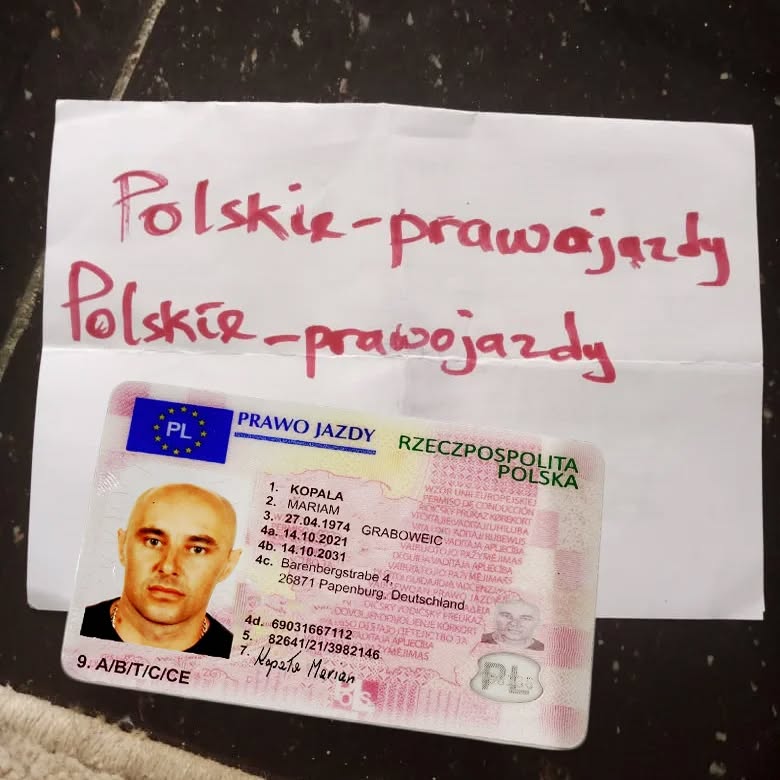A Peek In A1 Exam Rules's Secrets Of A1 Exam Rules
페이지 정보

본문
 The prawo jazdy motocykl a1 Goethe German Exam For Adults
The prawo jazdy motocykl a1 Goethe German Exam For Adults The egzamin teoretyczny a1 Goethe German Exam for adults (also referred to as "Start Deutsch 1") consists of four different sections: listening, reading writing, speaking, and listening. The aim is to achieve a score of 60% overall.
The egzamin teoretyczny a1 Goethe German Exam for adults (also referred to as "Start Deutsch 1") consists of four different sections: listening, reading writing, speaking, and listening. The aim is to achieve a score of 60% overall.To prepare for the A1 exam, it's important to be aware of the rules of grammar. Utilize this information to organize your learning and practice consistently.
Articles that are both definitive and indefinite
The Goethe-Zertifikat A1 -- also called Start Deutsch 1 -- is the first stage of the six-level Common European Framework of Reference for Languages (CEFR) and certifies that you have very basic German proficiency. It has four different sections, each evaluating your abilities in listening writing, reading, and speaking.
In German there are two kinds of articles which are definite and indefinite. The indefinite article is the word der, die, or the (a, an, or some). It signifies that the word is distinct and countable. In English, "the" is always the definite articles. However, in German, it can differ based on gender and Przepisy kategorii a1 the number of the noun.
For instance, a male noun is an Mann The feminine form is une femme, and the neuter is un homme. A noun can be plural or singular and have an indefinite or no article.
The notion of definite and non-definite articles is essential in German grammar. Another crucial aspect of grammar is the declension of adjectives. Adjectives can have different endings when they are followed by a definite or an indefinite article. It is crucial to know the difference between present and perfect tense, as well as how to make use of the auxiliary verbs and sind in a sentence.
There are many more rules and nuances to be mastered to pass the exam, but learning about these fundamentals is the best place to start. You can familiarize yourself with the format by taking sample questions or practice exams. It is also beneficial to practice under exam conditions, synchronizing your own work and recording notes while working.
The average exam lasts around 80 minutes, with each section having a set time frame allocated to it. The Reading and Listening sections typically have 30-40 questions, while the Writing and Speaking sections are longer. You must achieve a minimum score of 60 percent in each section to pass the test. On the Goethe Institute's website you can access a sample paper as well as other study materials.
Gender of Nouns
Nouns in German are classified as masculine, feminine or neuter. The gender determines the adjectives, articles and pronouns to be used in conjunction with a specific word. Unlike in some languages, gender isn't determined by the physical sex of a noun but rather an grammatical aspect. It is important to keep in mind that there are certain conventions for gender. If a word is masculine, it must be preceded by der. If it is feminine, it must be preceded by. Nouns that refer to male living things are also masculine, and should be prefixed by der. Examples include the Mann (man) Der Vater (father) or Der Honig. Nouns that refer to female living things are typically feminine and should be prefixed by the letter "die," such as die Frau (woman) Die Frau (woman), die Fraulein (Miss) and die Hengst (stallion). If a noun is made up of several words it is the compound that determines its gender more than the individual words.
The gender of many German nouns varies according to region. In Germany and Austria the word fur (for), for example is masculine, but in Switzerland it is feminine. This is due to the confusion of certain suffixes and grammatical characteristics.
It is easier to remember the gender of German words if you remember the words in groups, rather than individually. This will give you a a bigger picture that is easier to remember. For instance, the group of masculine nouns may include days of the week and months, like the Monat (month) and das Jahr (year).
As you study these the words, you will see patterns that emerge. For example, the names of the seasons and weeks are all masculine; the names of vegetables and fruits are mostly feminine, however there are a few exceptions. words that end with -heit, and ung are feminine, while words that end in -it, -heit -it, -ik or -it are neutral. With time and practice, these rules will become deeply ingrained in your mind.
Negative Articles
Like in English, German nouns are divided into three grammatical types and the articles (the equivalents of "a" and "the") vary depending on the case and gender. The negative article, negates nouns, thereby changing their meaning. Learning these articles and understanding the way they are used is essential at the A1 level, as they are often used in writing and speaking questions. Understanding gender and articles can help you comprehend simple written texts, such as labels and signs. It will also allow you to engage in basic conversations and write short messages or postcards. This knowledge can be used to communicate with native speakers and grasp the basic cultural information.
Verb Conjugation
The oral and written components of the paragrafy Kup Prawo Jazdy Kategorii A1 a1 (simply click the following article) Goethe test are both required. You will be required to answer multiple-choice and matching questions in the written section, and Paragrafy Kategorii a1 you will interact with the examiner by answering various questions based on language elements. You'll need to be proficient in using articles, verb conjugation and noun declensions. Also, you must be aware of the gender and case to make proper German sentences.
When you study for the Goethe test It is crucial to practice your German vocabulary and sentence structure as much as you can. You can do this by reading German magazines, books, or newspapers, or using apps for learning languages that help you read German texts. Talking with other German speakers or a tutor can aid in improving your grammar and pronunciation.
The conjugation of German verbs changes depending on the subject, tense, and mood. Most German verbs conjugate using an infinitive-based pattern. infinitive. Certain verbs require more memorizing, such as sein (to be) and have (to possess).
Modal verbs such as sollen (to wish) and konnen ("to be capable") have a distinct conjugation pattern that is based on the stem vowels of the first and third persons singular. These irregular verbs require more attention since their conjugations don't always match the regular verbs.
The past tense is another important element of conjugation. Most strong and mixed verbs change their stems to accommodate the past tense. For instance, if the stem of a verb ends in z or Paragrafy Kategorii A1 s, or ss then you add an e to indicate the past tense. lesen - ich leist, du lasest. If the stem ends in d, t or s, you can simply add an e at the end to make the past perfect: landet- ich laist, du ladet us landeten.
Adjective declensions refer to the endings of nouns when they are described either by other nouns, or by adjectives. The endings can also vary depending on whether a word is accompanied with an definite (der die, die) or indefinite (ein, one) or an absence of. Learning to recognize articles and the gender of nouns is a crucial aspect of grammar, and it will help you effectively form sentences for both the writing and speaking sections of the Goethe test.
- 이전글Why Driving A Scooter Could Be More Risky Than You Thought 25.02.23
- 다음글It Is The History Of Buy A Driving License Without Paying In Advance In 10 Milestones 25.02.23
댓글목록
등록된 댓글이 없습니다.